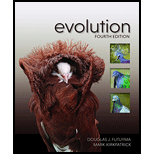
Concept explainers
To determine: A hypothesis to account for the presence of a species of the family Dipterocarpaceae in South America and how it can be tested.
Introduction: The plant family Dipterocarpaceae was thought to be found only in tropical Asia. In tropical Asia, many species of the plant are found to be ecologically dominant species. Recently, it has been found that a new species of the family Dipterocarpaceae inhabits the rainforest of Colombia, which is in the northern South America.
Explanation of Solution
Asia has several species of the family Dipterocarpaceae and they are dominant in Asia. A hypothesis could be suggested to explain the discovery of a tree in northern South America. A series of evolutionary events over a very long period of time and ecological factors, such as dispersal, could lead to the spread of the species into other areas such as Colombia and South America.
Since the species discovered in Colombia is new, it is assumed that a series of evolutions led to it and since Colombia is so far from Asia, it could be assumed that it occurred because of dispersal of seeds. Ecological factors, such as insects, must have been responsible for carrying the seeds so far from their origin. The seeds must have germinated under favorable conditions of the rainforest. Further propagation and colonization of the area must have led to continued survival.
This hypothesis can be proved or tested by the cultivation of a seed from a plant of the species of Dipterocarpaceae under the same environmental conditions as in the rainforest of Colombia. The arborescent and tropical conditions are similar to those needed by the plant. This proves that the plant can grow in the rainforest. It is already known that the seeds of the Dipterocarpaceae family are insect-pollinated. On the basis of both these factors, it can be concluded that the hypothesis suggested is a possible explanation for the presence of a species of the family Dipterocarpaceae in the rainforest of Colombia.
Want to see more full solutions like this?
- What is the difference of Savanna from thornwood?arrow_forwardWhich of the following genera most likely directly gave rise to the land plants? a. Volvox b. Chlamydomonas c. Ulva d. Charaarrow_forwardWhich of the following structures is not found in bryophytes? a. a cellulose cell wall b. chloroplast c. sporangium d. rootarrow_forward
- Please answer numbers 1-4: 1. Discuss why the genera Cannabis and Humulus, now in Cannabaceae, have been removed from the family Moraceae? 2. Distinguish between succulent Ephorbiaceae and Cactaceae especially when considering sterile plants.3. Take a closer look at the specimens of Malvaceae. Would you agree to the new classification system placing four families into one big family Malvaceae? Explain.4. Research on the ethnobotany of Cacao and be able to know the influence of man on its dispersal.arrow_forwardLignin and vascular tissue first evolved in relatives of club moss, and some extinct species stood 40 meters (130 feet) high. Explain how the evolution of vascular tissues and lignin would have allowed a dramatic increase in plant height. How might being tall give one plant species a competitive advantage over another?arrow_forwardBryophytes can be found in every type of habitation, except in the oceans, thus reflecting the progressive species expansion occurred along the evolution. However, bryophytes rarely succeed in the ecosystem. Why do you think so? Give three reasons.arrow_forward
- Many fungi are decomposers and degrade organic matter (such as wood and leaf litter). It has become clear that many of these decomposers are also able to colonize live plants as endophytes (living inside the plant without causing any harm) and allowing for prime access to plant tissues once the plant dies. Explain, using the principles of natural selection, how having the ability to be both a decomposer and endophyte evolved. Make sure you include the four steps of evolution by natural selection in your response.arrow_forwardWhy are the genera Cannabis and Humulus, now in Cannabaceae, have been removed from the family Moraceae?arrow_forwardThe following classification contains the class, domain, family, genus, kingdom, order, phylum & species (but not in that order) of the Longleaf Pine. They are arranged from the broadest category to the most specific: Eukarya --> Plantae --> Pinophyta --> Pinopsida --> Pinales --> Pinaceae --> Pinus --> Pinus palustris. Which one is the family?Group of answer choices A. Pinales B. Pinaceae C. Eukarya D. Pinus E. Pinus palustrisarrow_forward
- Monilophytes and seed plants both have megaphylls, as well as other traits not found in lycophytes. Explain this observation using the Figure in the picture and the concept of descent with modification.arrow_forwardWhich of the following statements characterize the megaphyll line of evolution? A) They differ from microphylls by developing a single, unbranched vein rather than a branched vascular system.B) They are believed to have evolved from branching telomeres that flattened and developed photosynthetic tissue between the branches.C) They developed into leaves that can also be called lycophyllsD) They developed into the large leaves of the angiospermsarrow_forwardAside from the Sapotaceae, what other families studied so far possess laticifers? What is a stipule? How can one distinguish a stipule from the bud associated with the petiole of a leaf? Name other families studied so far that have stipulate What is a pollinia? What other families studied has its pollen in pollinia?arrow_forward
 Biology: The Dynamic Science (MindTap Course List)BiologyISBN:9781305389892Author:Peter J. Russell, Paul E. Hertz, Beverly McMillanPublisher:Cengage Learning
Biology: The Dynamic Science (MindTap Course List)BiologyISBN:9781305389892Author:Peter J. Russell, Paul E. Hertz, Beverly McMillanPublisher:Cengage Learning
